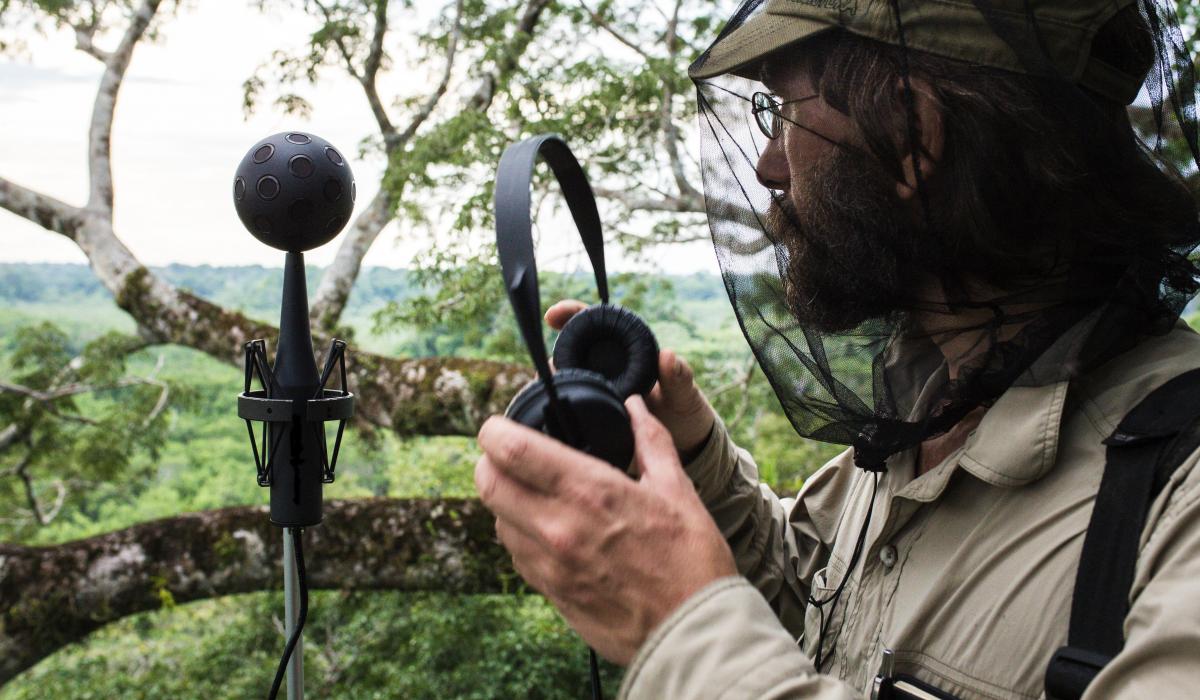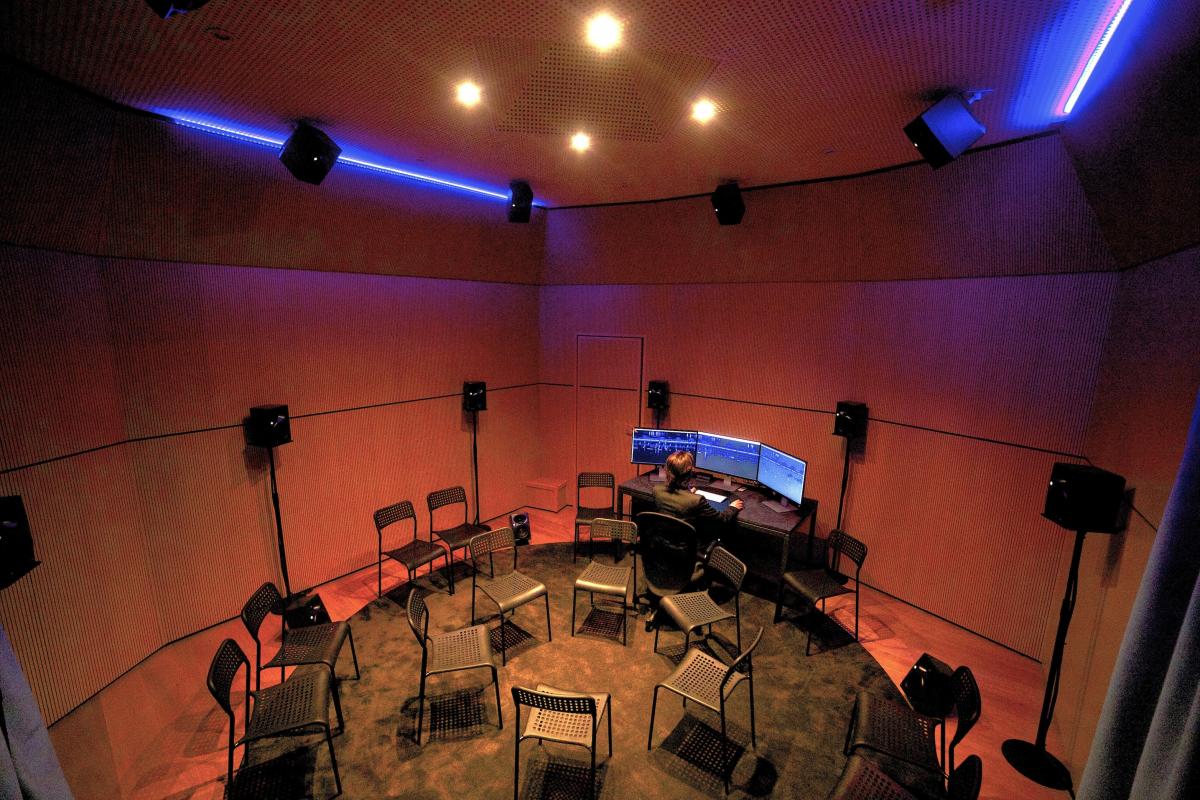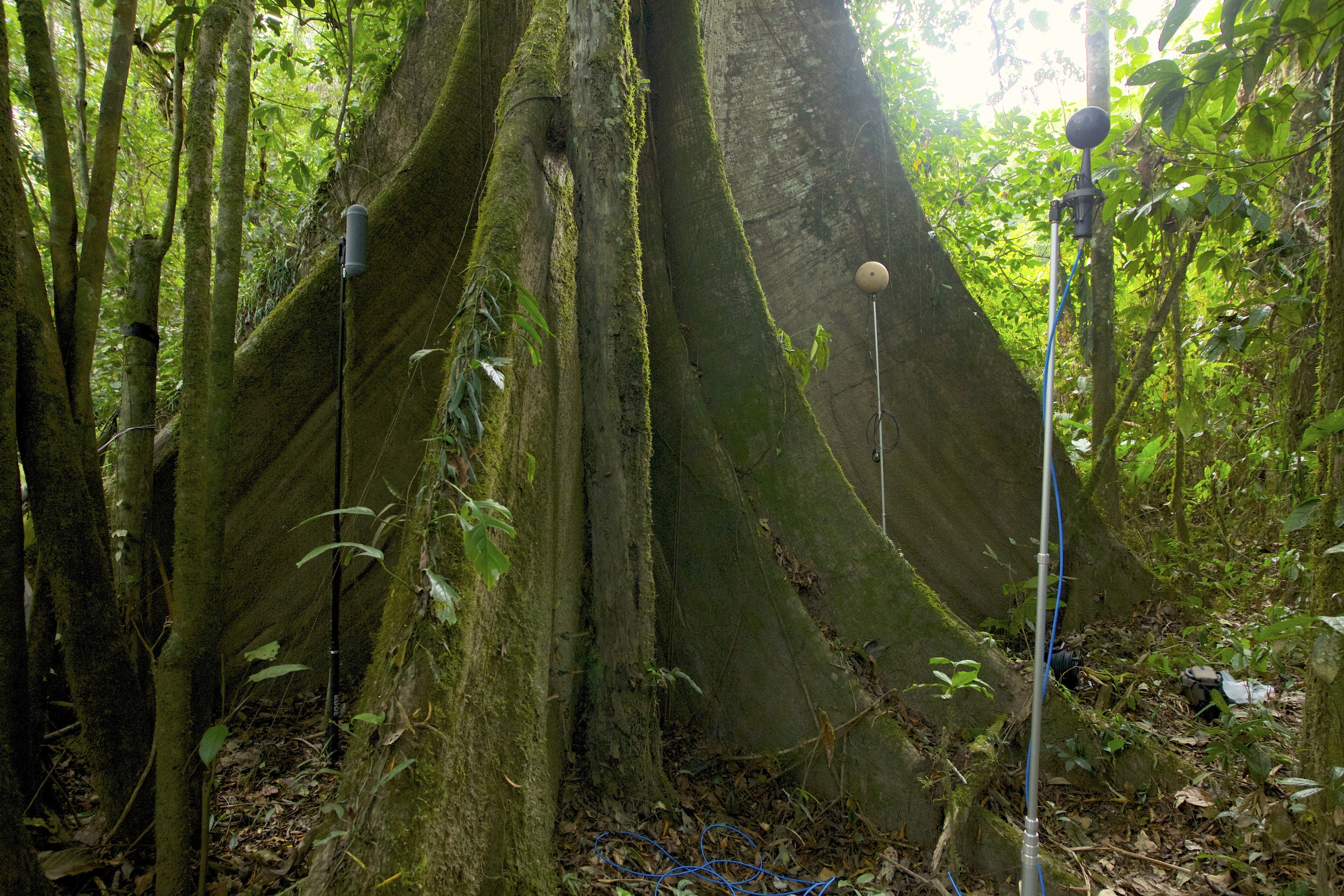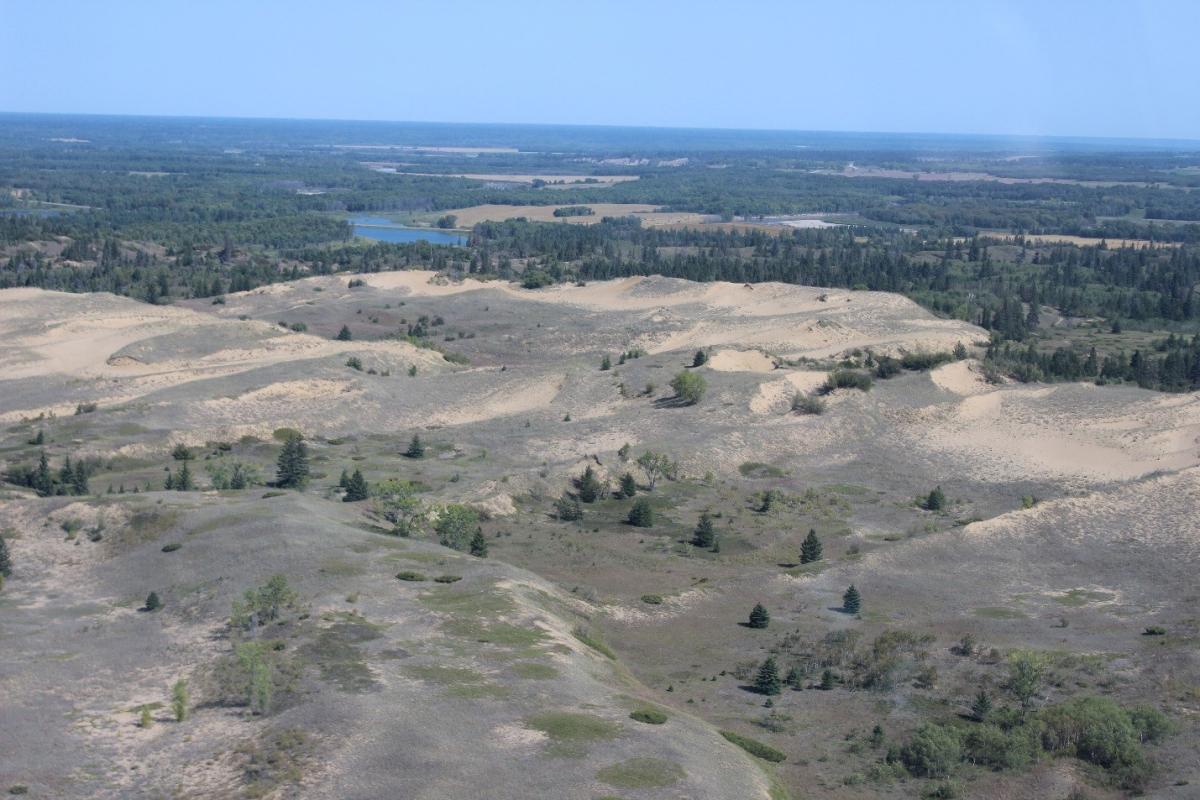Fragments of Extinction - The Sonic Heritage of Ecosystems
A multidisciplinary project on soundscape biodiversity
The soundscapes of remote natural habitats are outstanding footprints of the systemic behavior of healthy ecosystems.
Yet today, at the beginning of the current extinction crisis, the ‘paleo-choirs’ of the natural world are undergoing silent but real and lasting damage. The sonic structures that evolution produced over millions of years of interspecific acoustic adaptation are rapidly declining; within the near future, it may not be possible to witness them at all, in their original form. Fragments of Extinction, an interdisciplinary project, led by Italian eco-acoustic composer David Monacchi, is collecting, studying, and disseminating hi-definition 24-hour sound portraits of the world’s undisturbed primary equatorial forests, advocating for the importance of taking them as object of protection and patrimonialisation.
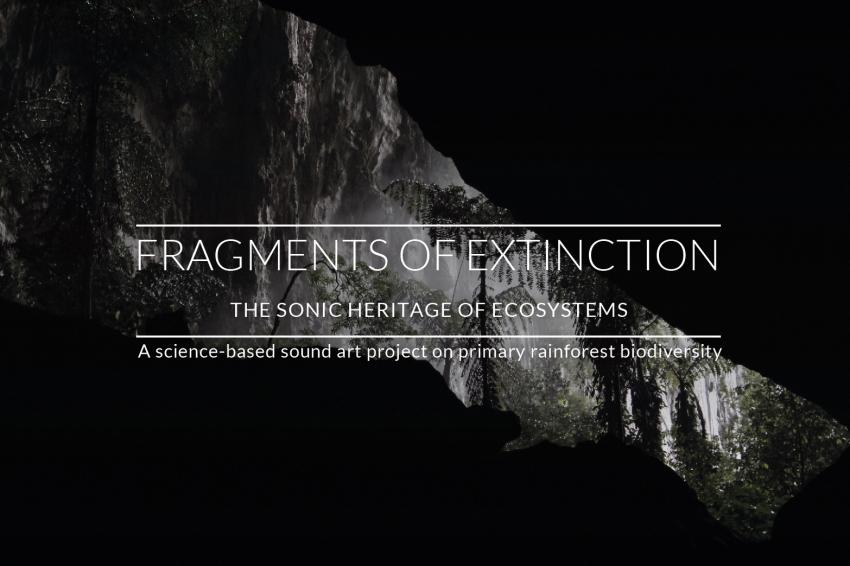
Since 2001, David Monacchi has conducted field recording campaigns in the main tropical regions where large areas of untouched rainforest are still present, including World Heritage sites, National Parks, and protected areas. Over the past fifteen years, this fieldwork has required the implementation of advanced microphone technologies for sampling the rainforest’s spatial features, pioneering for the first time the recording of high-order Ambisonics spherical soundfields in these remote, humid environments. Monacchi’s last fieldwork in one of the most diverse places on Earth (Yasunì, Ecuador) resulted in 1.5 terabytes of 38-channels data describing entire circadian cycles with unprecedented acoustic 3D definition, now available for scientific investigation and permanent archiving.
The newly established field of ‘eco-acoustics’ provides the necessary conceptual framework and analytic tools to investigate the relationships of the environment with natural and anthropogenic sounds, on community and ecosystem levels. Thanks to the space-preservative recordings employed uniquely in Fragments of Extinction, data are analysed not only at the microcosmic level of discrete individuals, i.e., identifying species calls and interactions among their individuals, but also at a macrocosmic level, i.e., exploring qualities of sonic networks and their spatial properties. This helps reveal strategies of acoustic niches segregation among species (both in the temporal and frequency domains) and displays the overall balanced complexity of intact ecosystems.
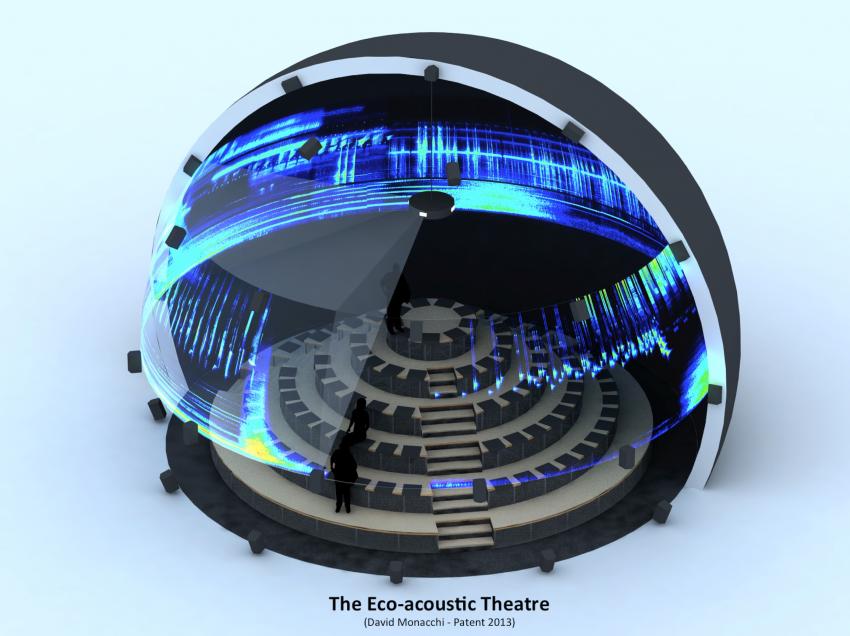
Merging science, technology, and art, Fragments has the potential to disseminate the ‘intelligent sound of ecosystems’ to audiences of museums, scientific institutions, and cultural venues. Immersive sound installations and particularly the Eco-acoustic Theatre (Patent, 2013) enable an intimate experience of nature through the latest technologies in 3D sound reconstruction. Maintaining listening as the primary perceptual access to the order and beauty of these fragile ecosystems, streaming spectrograms of the soundscape, projected at 360°, allow the audience to decipher sound environments in real time.
By cultivating interest in nature through an immersive aural fruition, science-based art projects can play an important role in finding new strategies for environmental education, connecting people to the direct experience of natural phenomena, forging a crucial bridge between nature and culture, and fostering public awareness of the need for the protection of biodiversity. Embracing an innovative multidisciplinary perspective, the project envisions sound as both the medium for the perception of the beauty of endangered natural systems and the target of scientific investigation and conservation.
Today, with the noiseless force of climate change, potentially all primary undisturbed ecosystems (whether protected or not) are subject to the mutilation of their species composition, and thus of their original acoustic richness and stability. By archiving 3D fragments of intact soundscapes now, we can provide a repository of proxies that may document alteration in ecosystems and possibly add more nuanced criteria for the documentation of ecosystems’ damage and loss.
The project Fragments of Extinction will be hosted in the Protected Planet Pavilion at the IUCN World Conservation Congress 2016 in Hawaii, where it will be possible to experience selected sound excerpts collected in Africa, Borneo and Amazon, specifically mastered for head-tracked headphones.
(Image: rendering by Pippo Marino)
